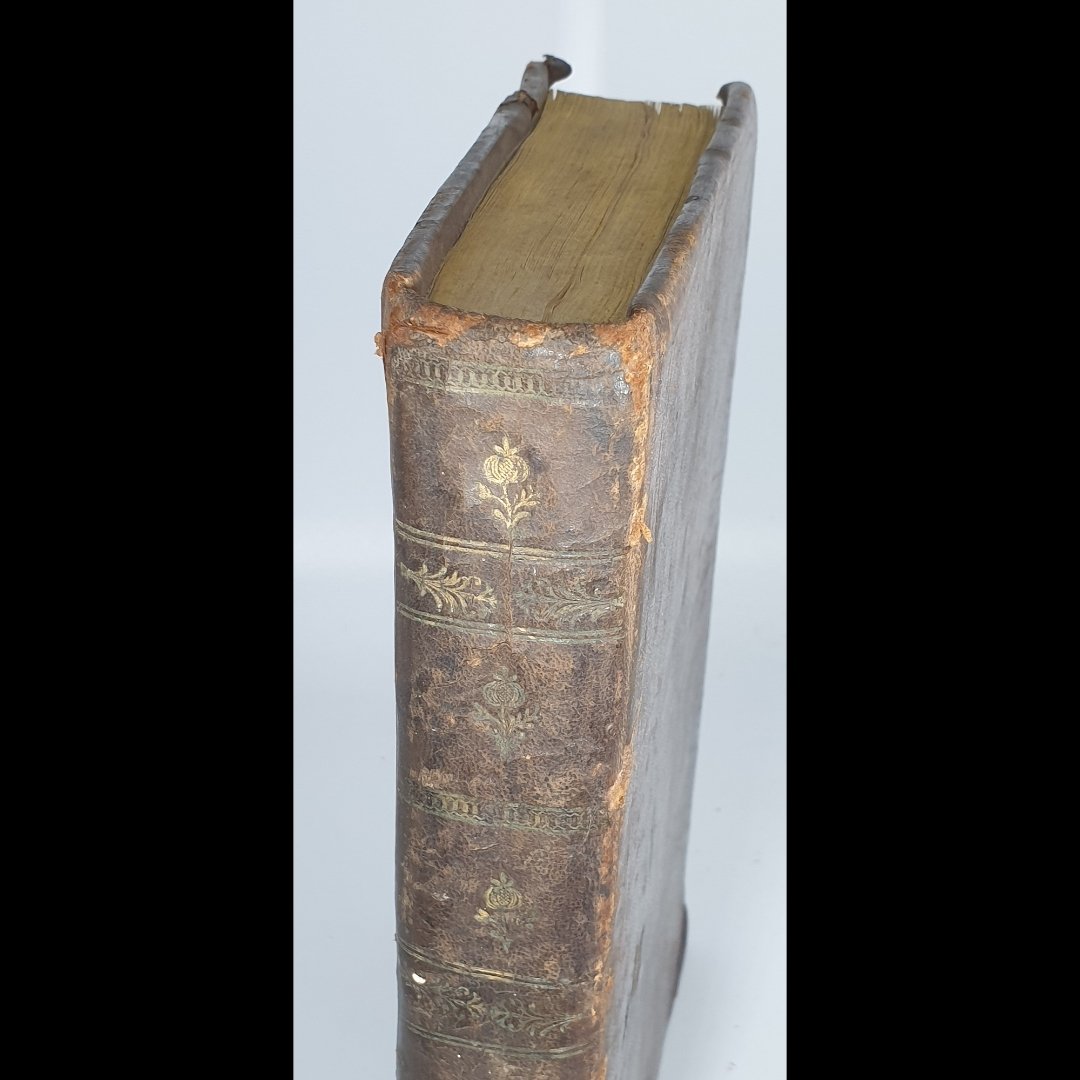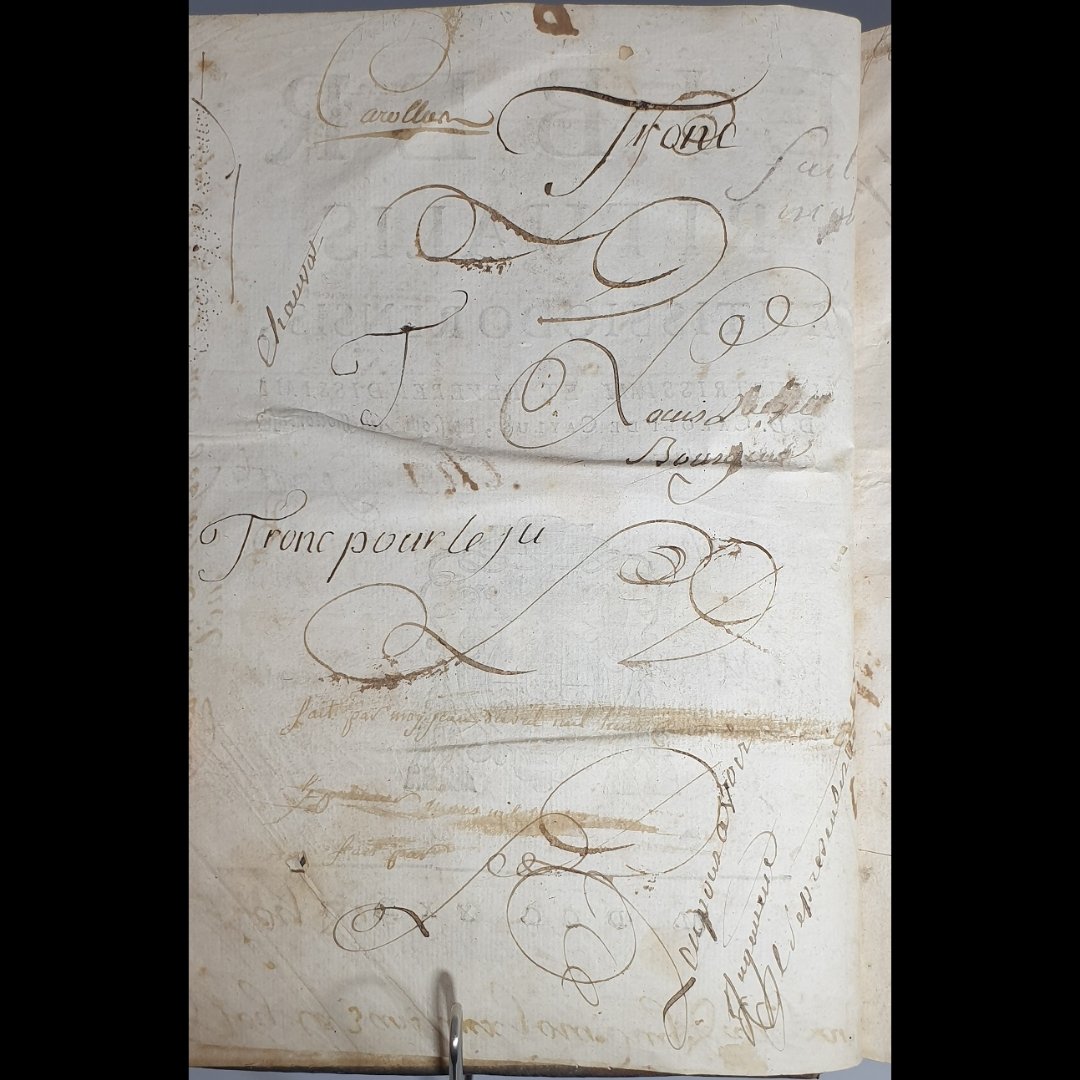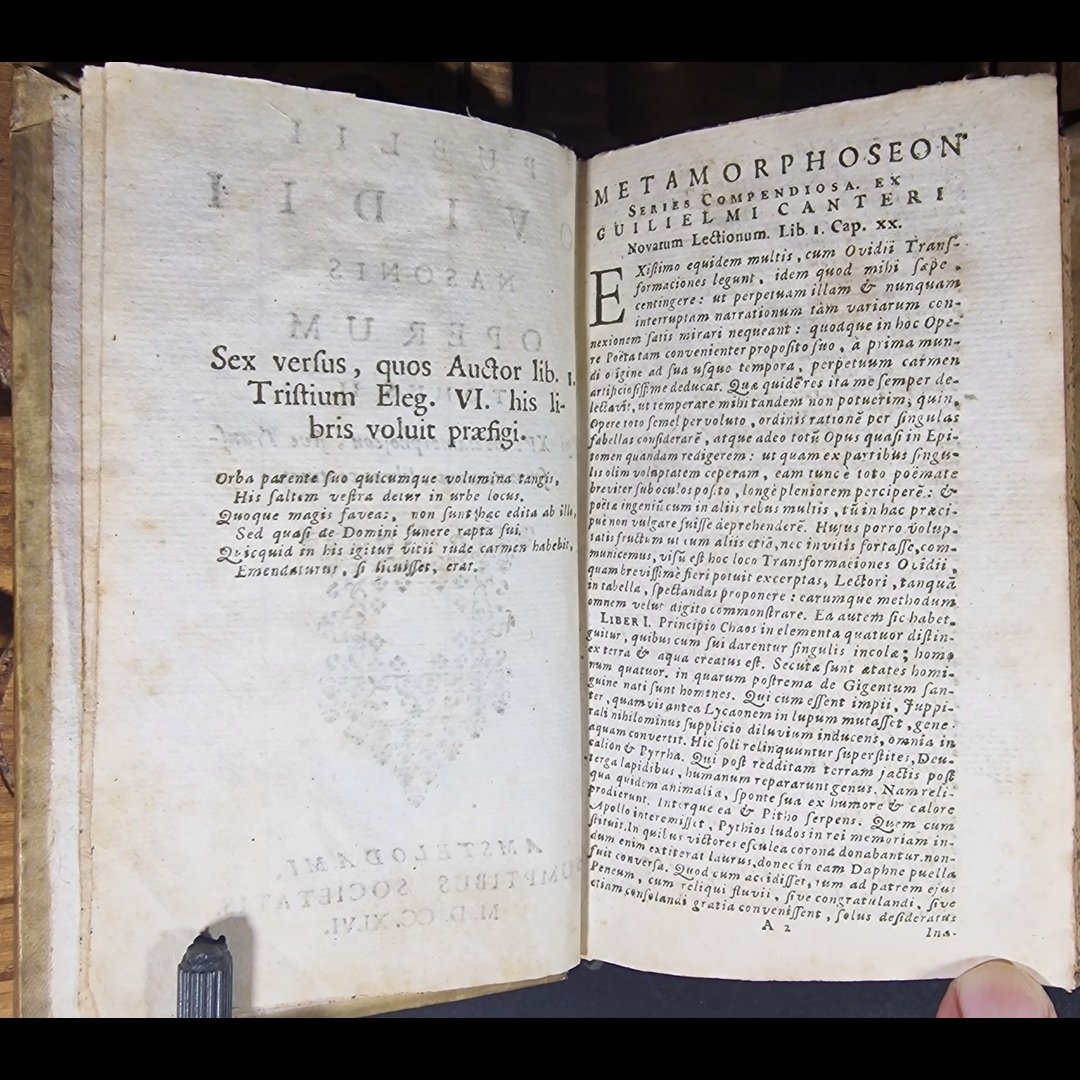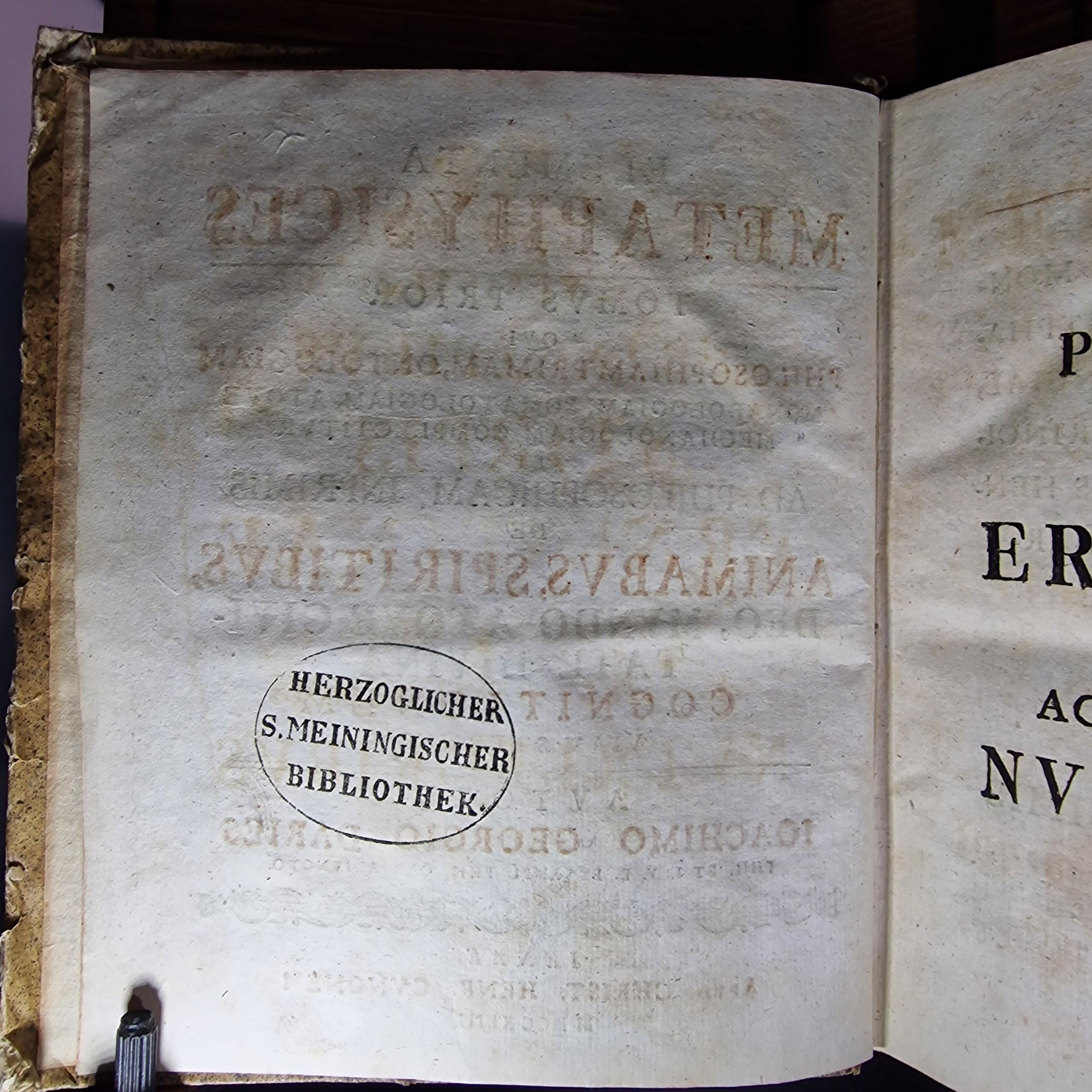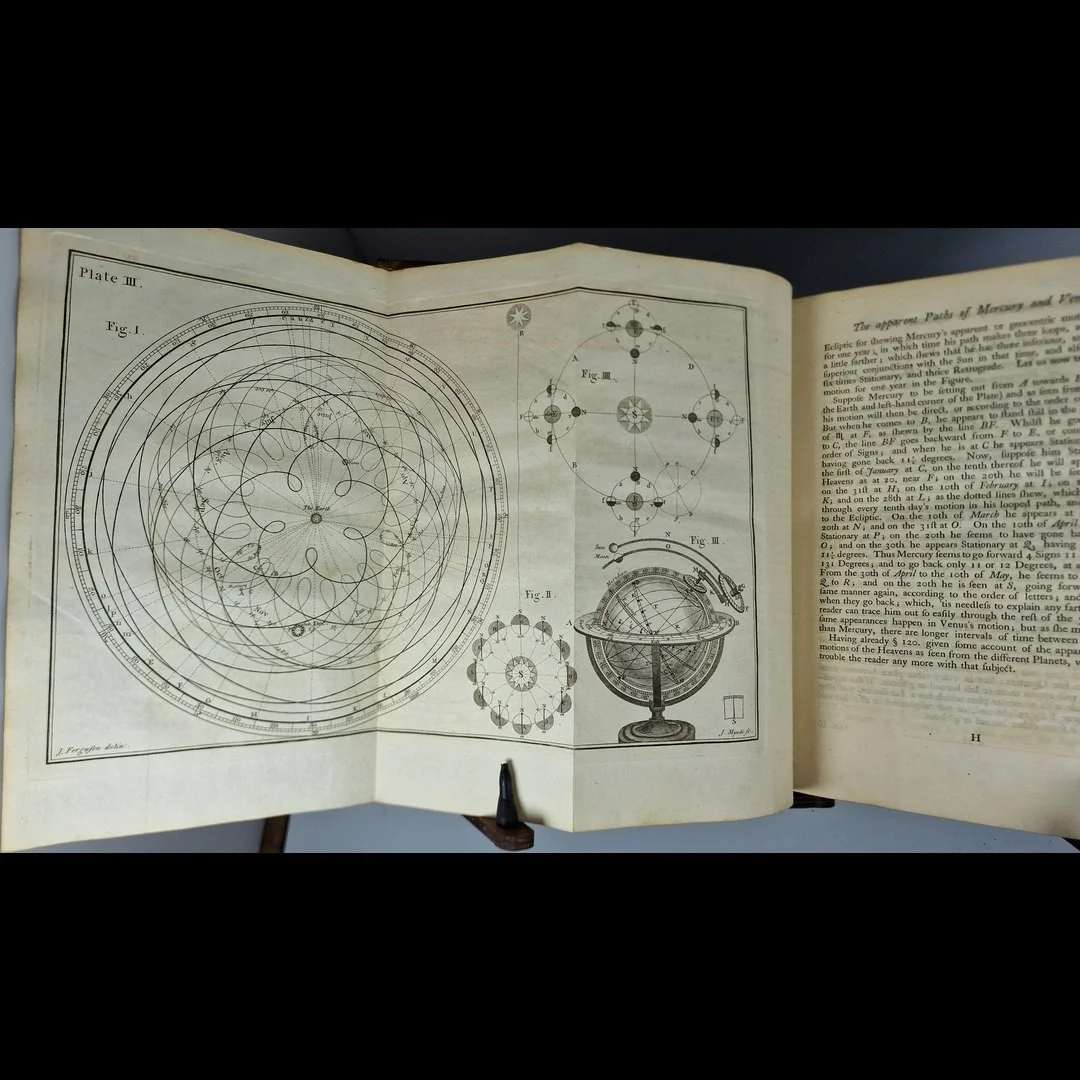 Image 1 of 14
Image 1 of 14

 Image 2 of 14
Image 2 of 14

 Image 3 of 14
Image 3 of 14

 Image 4 of 14
Image 4 of 14

 Image 5 of 14
Image 5 of 14

 Image 6 of 14
Image 6 of 14

 Image 7 of 14
Image 7 of 14

 Image 8 of 14
Image 8 of 14

 Image 9 of 14
Image 9 of 14

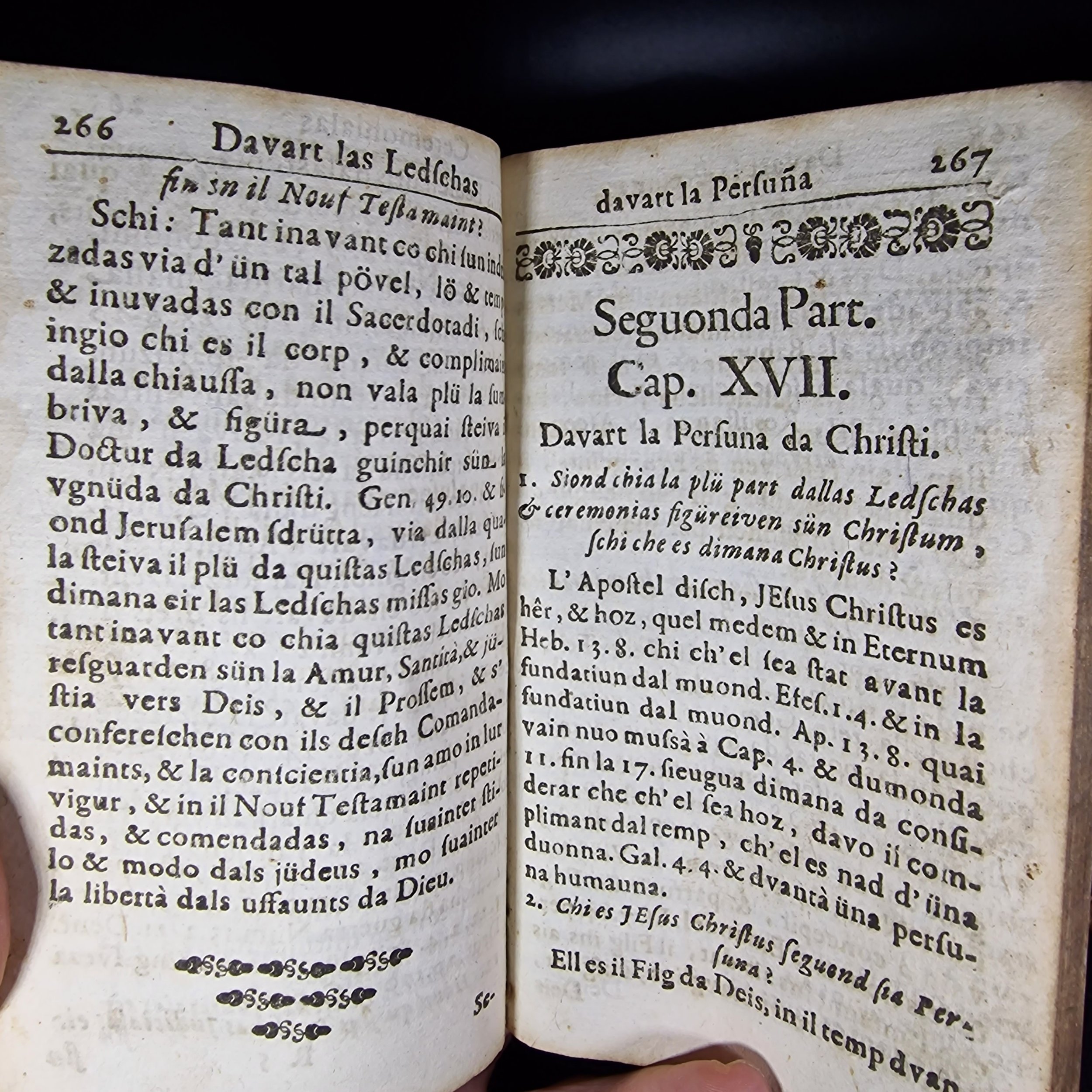 Image 10 of 14
Image 10 of 14

 Image 11 of 14
Image 11 of 14

 Image 12 of 14
Image 12 of 14

 Image 13 of 14
Image 13 of 14

 Image 14 of 14
Image 14 of 14















1747 1st Edtn Leather. MSS notation on FEP from 1859 IL MANDEL SPIRITUAL By Johann Heinrich Heidegger Translated By Dumeng Conradin Bonorand Illus. Good
1747 1st Edition , Leather. MSS notation on FEP from 1859
IL MANDEL SPIRITUAL
Que ais il Minz dalla Cristiauna Theologia our dalla S.
By Johann Heinrich Heidegger Translated By Dumeng Conradin Bonorand
Johann Heinrich Heidegger (July 1, 1633 – July 18, 1698), Swiss theologian, born at Bäretswil, in the Canton of Zürich. He studied at Marburg and at Heidelberg, where he became the friend of J. L. Fabricius, and was appointed professor extraordinarius of Hebrew and later of philosophy. In 1659, he was called to Steinfurt to fill the chair of dogmatics and ecclesiastical history, and in the same year he became doctor of theology of Heidelberg.
Heidegger was the principal author of the Formula Consensus Helvetica in 1675, which was designed to unite the Swiss Reformed churches, but had an opposite effect. Wilhelm Gass describes him as the most notable of the Swiss theologians of the time. His writings are largely controversial, though without being bitter, and are in great part levelled against the Roman Catholic Church.
Illustrated By: N/A
Format: Hardcover,
Language: Ladin
Dust Jacket: No Jacket, Dust Jacket Condition: No Jacket
Published By: Jachen Not Gadina, Switzerland
octodecimo or eighteenmo (18mo 4 × 6+1⁄2 102 × 165),Pages 556
ISBN:
This book consists of a preface and twenty-five canons, and states clearly the difference between strict Calvinism and the school of Saumur.
Canons i–iii treat of divine inspiration, and the preservation of the Scriptures.
Canons iv–vi relate to election and predestination.
Canons vii–ix attempt to show that man was originally created holy, and that obedience to law would have led him to eternal life.
Canons x–xii reject La Place's doctrine of a mediate imputation of the sin of Adam.
Canons xiii–xvi treat of the particular destination of Christ as he from eternity was elected head, master, and heir of those that are saved through him, so in time he became mediator for those who are granted to him as his own by eternal election.
Canons xvii–xx state that the call to election has referred at different times to smaller and larger circles
Canons xxi–xxiii define the total incapacity of man to believe in the Gospel by his own powers as natural, not only moral, so that he could believe if he only tried.
Canons xxiii–xxv state that there are only two ways of justification before God and consequently a twofold covenant of God, namely the covenant of the works for man in the state of innocence, and the covenant through the obedience of Christ for fallen man. The final canon admonishes to cling firmly to the pure and simple doctrine and avoid vain talk.
SKU: BTETM0002024
Approximate Package Dimensions H: 12.5, L: 30, W: 25 (Units: cm), W: 2Kg
1747 1st Edition , Leather. MSS notation on FEP from 1859
IL MANDEL SPIRITUAL
Que ais il Minz dalla Cristiauna Theologia our dalla S.
By Johann Heinrich Heidegger Translated By Dumeng Conradin Bonorand
Johann Heinrich Heidegger (July 1, 1633 – July 18, 1698), Swiss theologian, born at Bäretswil, in the Canton of Zürich. He studied at Marburg and at Heidelberg, where he became the friend of J. L. Fabricius, and was appointed professor extraordinarius of Hebrew and later of philosophy. In 1659, he was called to Steinfurt to fill the chair of dogmatics and ecclesiastical history, and in the same year he became doctor of theology of Heidelberg.
Heidegger was the principal author of the Formula Consensus Helvetica in 1675, which was designed to unite the Swiss Reformed churches, but had an opposite effect. Wilhelm Gass describes him as the most notable of the Swiss theologians of the time. His writings are largely controversial, though without being bitter, and are in great part levelled against the Roman Catholic Church.
Illustrated By: N/A
Format: Hardcover,
Language: Ladin
Dust Jacket: No Jacket, Dust Jacket Condition: No Jacket
Published By: Jachen Not Gadina, Switzerland
octodecimo or eighteenmo (18mo 4 × 6+1⁄2 102 × 165),Pages 556
ISBN:
This book consists of a preface and twenty-five canons, and states clearly the difference between strict Calvinism and the school of Saumur.
Canons i–iii treat of divine inspiration, and the preservation of the Scriptures.
Canons iv–vi relate to election and predestination.
Canons vii–ix attempt to show that man was originally created holy, and that obedience to law would have led him to eternal life.
Canons x–xii reject La Place's doctrine of a mediate imputation of the sin of Adam.
Canons xiii–xvi treat of the particular destination of Christ as he from eternity was elected head, master, and heir of those that are saved through him, so in time he became mediator for those who are granted to him as his own by eternal election.
Canons xvii–xx state that the call to election has referred at different times to smaller and larger circles
Canons xxi–xxiii define the total incapacity of man to believe in the Gospel by his own powers as natural, not only moral, so that he could believe if he only tried.
Canons xxiii–xxv state that there are only two ways of justification before God and consequently a twofold covenant of God, namely the covenant of the works for man in the state of innocence, and the covenant through the obedience of Christ for fallen man. The final canon admonishes to cling firmly to the pure and simple doctrine and avoid vain talk.
SKU: BTETM0002024
Approximate Package Dimensions H: 12.5, L: 30, W: 25 (Units: cm), W: 2Kg
Good - weel used book. Leather boards show signs of wear and usage. String/leather strap present. Text block firm and tight. Marginalia presnt in front dated 1859, and rear, sporadically through not inteferring with text. Pages show signs of aging.



